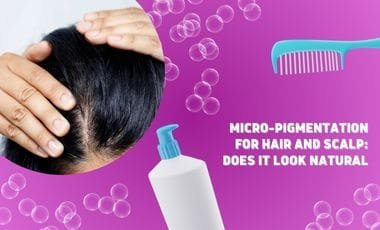Mesotherapy For Hair and Skin: Benefits, Results and Side Effects
What if the real solution to thinning hair and tired skin isn’t another serum — but a series of tiny injections? Mesotherapy for hair and mesotherapy for skin has quietly become one of the most talked-about treatments in aesthetic clinics — not just for the attention, but for the actual results. It delivers nutrients exactly where your scalp or skin needs them most, with visible improvements in texture, thickness, and tone. In this article, we’ll break down how it works, real mesotherapy benefits, the results you can expect, and potential side effects of mesotherapy. We’ll also explore how Ayla Skin & Hair Clinic offers a more personalized, affordable way to experience it. What Is Mesotherapy and How Does It Work? Mesotherapy is a non-surgical treatment where a mix of vitamins, enzymes, plant extracts, and other nutrients are injected into the middle layer of the skin — the mesoderm. These microinjections are delivered just beneath the surface using a fine needle or device like a meso gun or derma pen. The goal? To nourish and stimulate, not just treat from the outside in. By targeting the root of skin and scalp concerns — like poor circulation, inflammation, or nutrient deficiency — mesotherapy helps the body stimulate its own repair systems. It’s considered minimally invasive and doesn’t require any cuts, stitches, or long recovery time. Most sessions take under 30 minutes, making it a go-to treatment for people who want visible results without the commitment of surgery. Now, here’s where things get specific: Mesotherapy for hair focuses on reactivating dormant hair follicles and improving scalp health. It’s commonly used to address thinning hair, early-stage hair loss, and breakage. Mesotherapy for skin, on the other hand, targets issues like dullness, fine lines, pigmentation, and dehydration — helping restore elasticity, radiance, and overall tone. Mesotherapy for Hair: Stimulating Growth at the Roots How it works for hair Mesotherapy for hair is like feeding your scalp a nutrient smoothie — right where it counts. Instead of relying on surface-level products, this treatment injects growth-boosting ingredients directly into the scalp, targeting the hair follicles. These injections often include vitamins (like B-complex), minerals, amino acids, peptides, and plant extracts. Once inside, they work to: Improve microcirculation around the follicles Deliver essential nutrients to stimulate hair growth Reduce scalp inflammation Reactivate dormant follicles that were stuck in the resting phase Strengthen the structure of weak, thinning strands Over time, this creates an environment that supports healthier, thicker, and more resilient hair. Common conditions treated Mesotherapy is especially helpful when hair fall isn’t just about genetics — but about nutrient loss, stress, or lifestyle issues. At Ayla Skin & Hair Clinic, we’ve seen results in clients dealing with: Early-stage hair thinning and diffuse hair loss Androgenic alopecia (male or female pattern baldness) Dandruff, itchiness, or poor scalp hygiene Hair breakage or lack of volume near the roots Even better, the treatment doesn’t just target symptoms. It works on the underlying cause, which is often inflammation or nutrient starvation in the scalp. Expected mesotherapy results for hair Most clients begin to notice reduced hair fall after 2–3 sessions, with visible growth appearing by session 5 or 6. The speed and extent of change depend on the stage of hair loss and how well your follicles respond. Clinical studies have shown a 25–30% increase in hair density over several sessions of mesotherapy when combined with active ingredients like biotin and hyaluronic acid. Mesotherapy for Skin: Rejuvenating from Within How it works for skin Mesotherapy for skin works below the surface — where topical creams can’t reach. By using microinjections of antioxidants, hyaluronic acid, amino acids, peptides, and vitamins, this treatment directly targets the skin’s structural support system. These ingredients do more than just hydrate. They stimulate collagen and elastin production, repair damage from UV exposure or pollution, and encourage healthier skin turnover. Skin concerns it addresses Mesotherapy for skin is ideal for people looking to refresh their appearance without going under the knife. It’s commonly used to improve: Fine lines and wrinkles — especially around the eyes, mouth, and forehead Hyperpigmentation and uneven skin tone — including post-acne marks and sun spots Dullness, dehydration, or texture issues — like dry patches or roughness Whether your skin’s looking tired from stress, screen time, or simply aging, mesotherapy helps reset it from the inside out. Visible improvements and timelines You might notice a subtle glow after the very first session — but the real mesotherapy results show up after 3 to 5 treatments, spaced 2–3 weeks apart. That’s when skin looks noticeably: More hydrated and plump Even in tone Firmer, smoother, and more elastic Are There Any Side Effects? Let’s Talk Risks Let’s be real — side effects of mesotherapy exist, just like with any cosmetic treatment that involves needles. But most reactions are mild, short-lived, and manageable with basic aftercare. What you might feel post-session: Mild swelling, redness, or itching around injection points Light bruising or tenderness (especially on sensitive scalps or under the eyes) A temporary burning or stinging feeling during application These usually disappear within 24 to 48 hours, especially if your provider uses high-quality ingredients and a gentle injection technique — something we prioritize at Ayla Skin & Hair Clinic. Less common, but possible: Small bumps or knots under the skin if injections are too shallow Allergic reactions to ingredients (which is why we always ask about sensitivities) Infection, if proper sterilization isn’t followed — another reason to never DIY mesotherapy at home Basic aftercare rules to reduce risks: Don’t wash your face or hair for at least 24 hours post-treatment Avoid sun exposure, sweating, or heat (like saunas) for 2–3 days Keep your hands off the treated area to prevent irritation or infection Skip alcohol for 24 hours (it increases blood flow and may affect absorption) Who should not get mesotherapy? Mesotherapy is off-limits if you: Are pregnant or breastfeeding Have autoimmune conditions or severe chronic illnesses Have active skin infections, acne flare-ups, or unhealed wounds in
Mesotherapy For Hair and Skin: Benefits, Results and Side Effects Read More »



